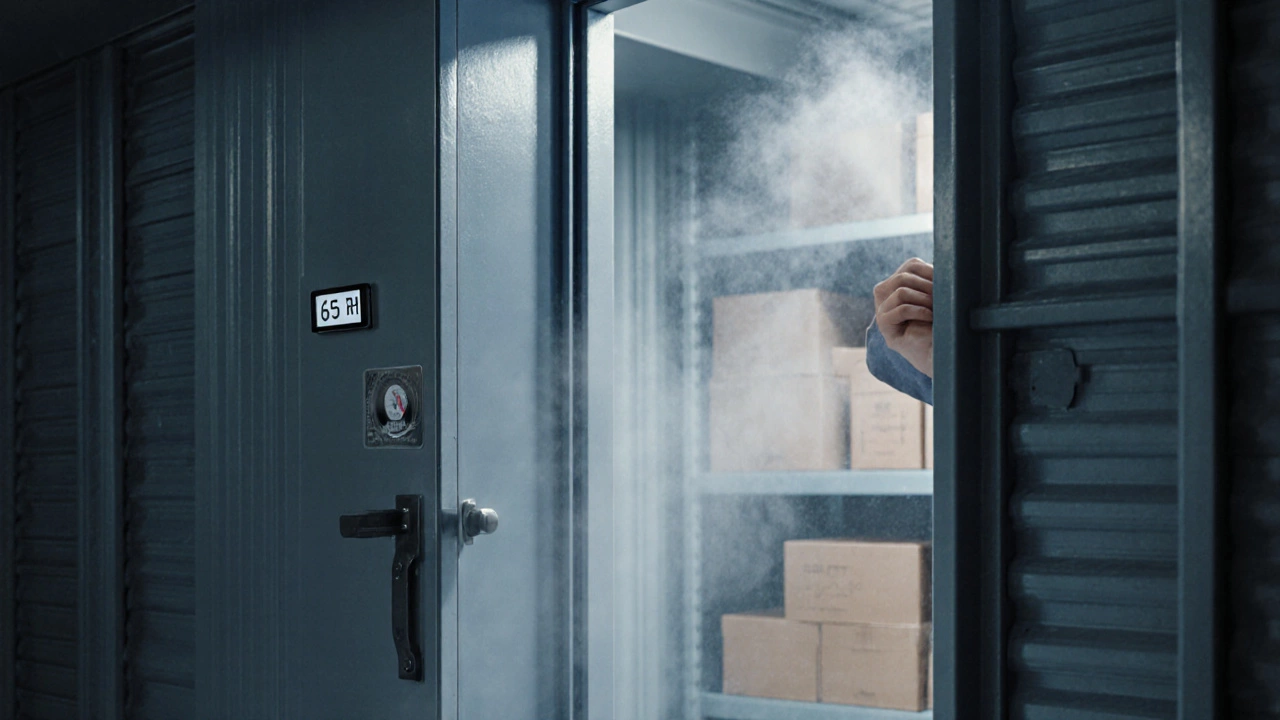
Top Moisture Absorbers for Keeping Your Storage Unit Dry
Discover the top moisture absorbers for storage units, how they work, and practical tips to keep your stored items dry and safe.
When working with silica gel, a porous granular desiccant that absorbs moisture from the surrounding air. Also known as desiccant beads, it’s a go‑to solution for keeping humidity in check. Humidity, the amount of water vapor in the air, can cause wood to swell, metal to rust, and paper to warp. By placing silica gel packets in a closet, storage box, or even a classroom cupboard, you create a low‑humidity micro‑environment that slows these processes. This connection—silica gel helps control humidity—means you get longer‑lasting furniture, fewer mold spots, and protect electronics from condensation. Another key player is the desiccant, a broader category that includes silica gel, calcium chloride, and molecular sieves. Desiccant packets are a type of silica gel product designed for convenient placement, and they work by pulling water molecules onto their surface, effectively lowering the relative humidity around them. Finally, think about storage, the practice of keeping items in a controlled space. Proper storage combined with desiccant use creates a protective barrier, ensuring that wooden chairs, metal desks, and fabric upholstery stay in good shape for years. Below we’ll explore how these ideas play out in everyday settings, from school classrooms to home offices, and why the right moisture management strategy matters.
In schools, furniture sees a lot of foot traffic, spills, and temperature changes, all of which raise humidity levels. When humidity spikes, wooden desk legs can warp, metal chair frames may start to squeak, and fabric cushions can develop mildewy odors. Using silica gel inside drawer liners or under seat cushions creates a dry zone that counters these effects. The relationship—humidity affects wood furniture—means that even a small reduction in moisture can keep a desk’s finish looking fresh. Desiccant packets also double as pest deterrents; some varieties contain insect‑repelling additives, turning the moisture‑absorbing function into a dual‑purpose tool. Moreover, teachers often store textbooks, exam papers, and art supplies in cabinets. By placing a few silica gel sachets in each compartment, you protect paper from becoming soggy or curling, keeping resources ready for the next lesson. The synergy—desiccant packets are a type of silica gel product used in storage—makes implementation simple: just buy bulk packets, distribute them where needed, and replace them every few months. This low‑cost habit can extend the lifespan of expensive educational furniture, saving schools money and reducing waste.
Across the collection of articles below, you’ll find practical guides on everything from choosing the right type of desiccant for a classroom cabinet to measuring the effectiveness of silica gel in a storage closet. We’ve gathered tips on how to monitor humidity levels, when to replace spent packets, and creative ways to integrate moisture‑absorbing solutions into furniture design without sacrificing style. Whether you’re a facilities manager, a teacher setting up a new lab, or a homeowner looking to protect a vintage desk, the insights in these posts will give you actionable steps to keep moisture at bay and your furniture looking its best.

Discover the top moisture absorbers for storage units, how they work, and practical tips to keep your stored items dry and safe.